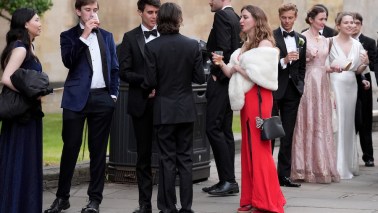You don’t need to be much of a psychologist to understand the trajectory of Henri de Toulouse-Lautrec. Born to aristocratic first cousins, in a family never shy of consanguinity, he was blighted by congenital deformities and weaknesses. When his brittle legs broke in his teenage years, they stopped growing altogether, leaving the adult Lautrec tiny as well as weird-looking, with his heavy lips and thick-lidded eyes.
Fortunately, Montmartre was waiting for him, offering a boozy and bosomy refuge from his peculiar family and woeful self-regard. In the dance halls of the capital, Lautrec found his people, and in his art they found themselves. His paintings tell the story best, all those fleshy whores lying in bed or lining up for medical examinations. Elsewhere, twisty-faced café patrons and performers are illuminated by a new, acidic, electric glare. But it is Lautrec’s posters, and their famous subjects, that take centre-stage in this exhibition.
Fin-de-siècle Paris was a fine time to be a proto-celebrity. An expanding entertainment industry had allied itself with innovative printmaking techniques and visionary artists, plastering seductive posters across the streets and making a generation of performers fabulously famous. Into this mix stepped Lautrec, lord of the blank space and the bold line, to become the belle époque’s most sought-after poster designer.
He wasn’t the first, though. The daddy was Jules Chéret, the original master of poster lithography, who preceded Lautrec by decades and was receiving the Légion d’honneur in 1890 while his successor was getting whacked on absinthe and contracting syphilis down the brothel. Chéret’s work kicked like a cancan dancer, his radical use of large-scale, colourful pictures and hand-drawn wording leaping out from the reams of letterpress posters that then bedecked the streets.








Comments
Join the debate for just £1 a month
Be part of the conversation with other Spectator readers by getting your first three months for £3.
UNLOCK ACCESS Just £1 a monthAlready a subscriber? Log in